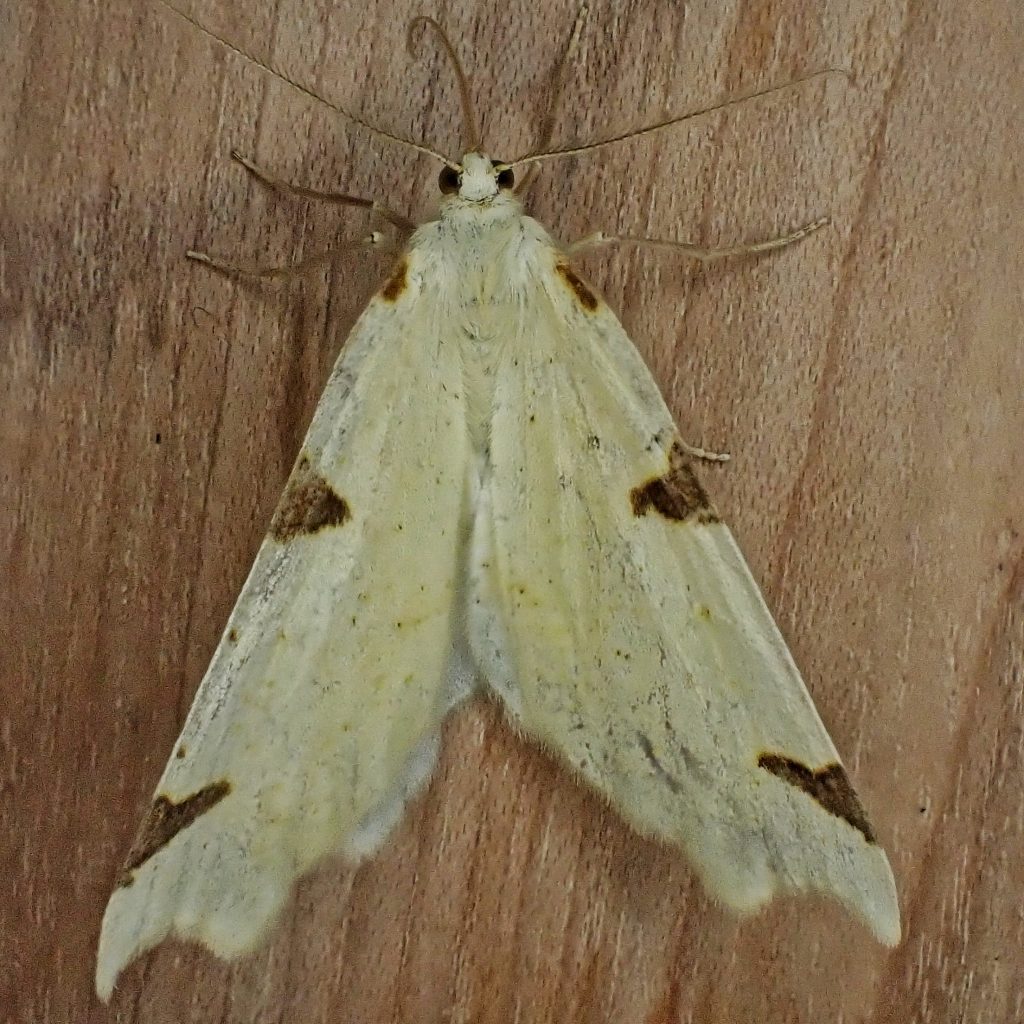
The information on these wonderful Geometrid moths indicates that they are also found at lower elevations, but the only ones that have graced my lights have been in the Cascades and Ochocos above 3500’. Which is a shame because I find Neoterpes trianguliferata (which some call the canary thorn) to be absolutely beautiful in its elegant simplicity of adornment, and I always hope to find some whenever I know there are gooseberries (Ribes) in the area.
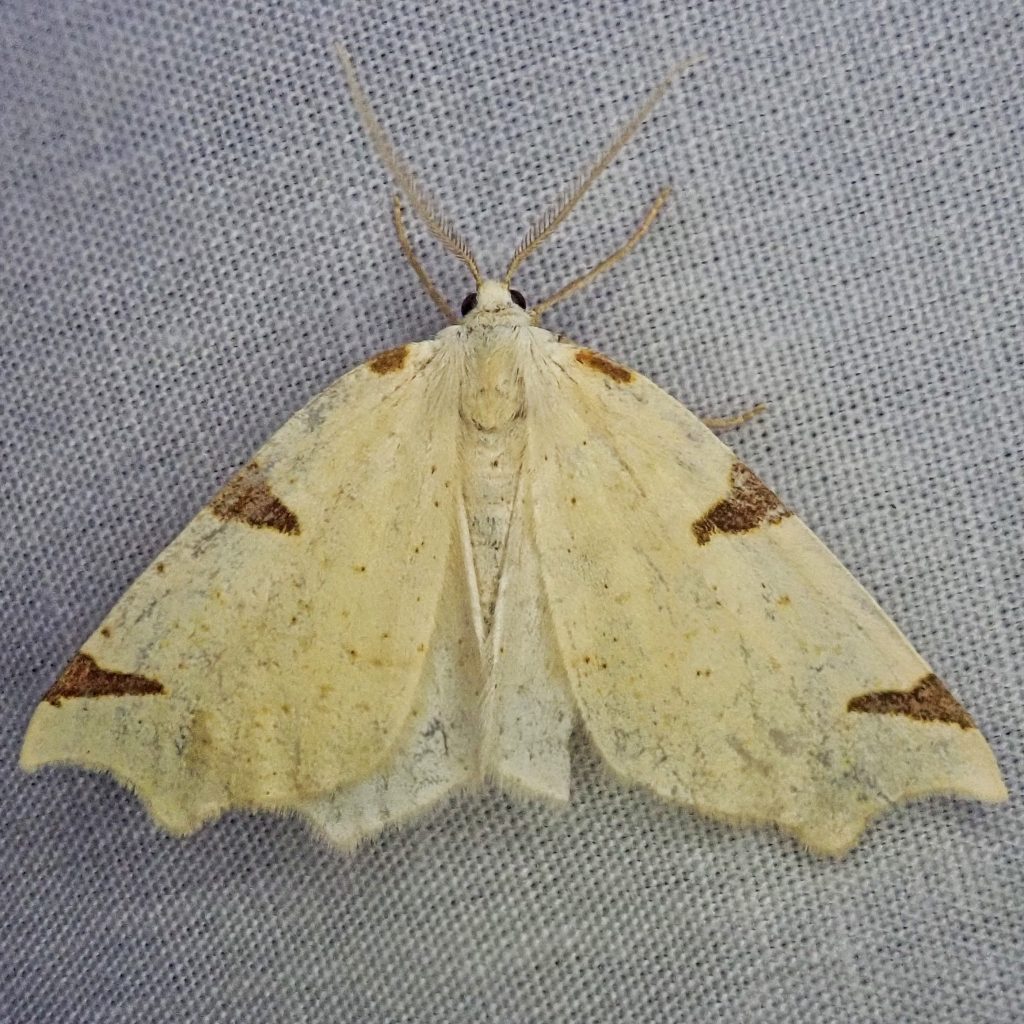
Description-Medium sized (Fw length 14-20mm) Geometer with somewhat triangular but irregular dark marks only at the costa where the antemedial and postmedial lines would be, against a cream to yellow background; sometimes has small costal marks nearer to the base; rarely with dots or interrupted postmedial line; dorsal and hindwing margin with a point in the middle; hindwing slightly lighter than forewing.
Similar species– None
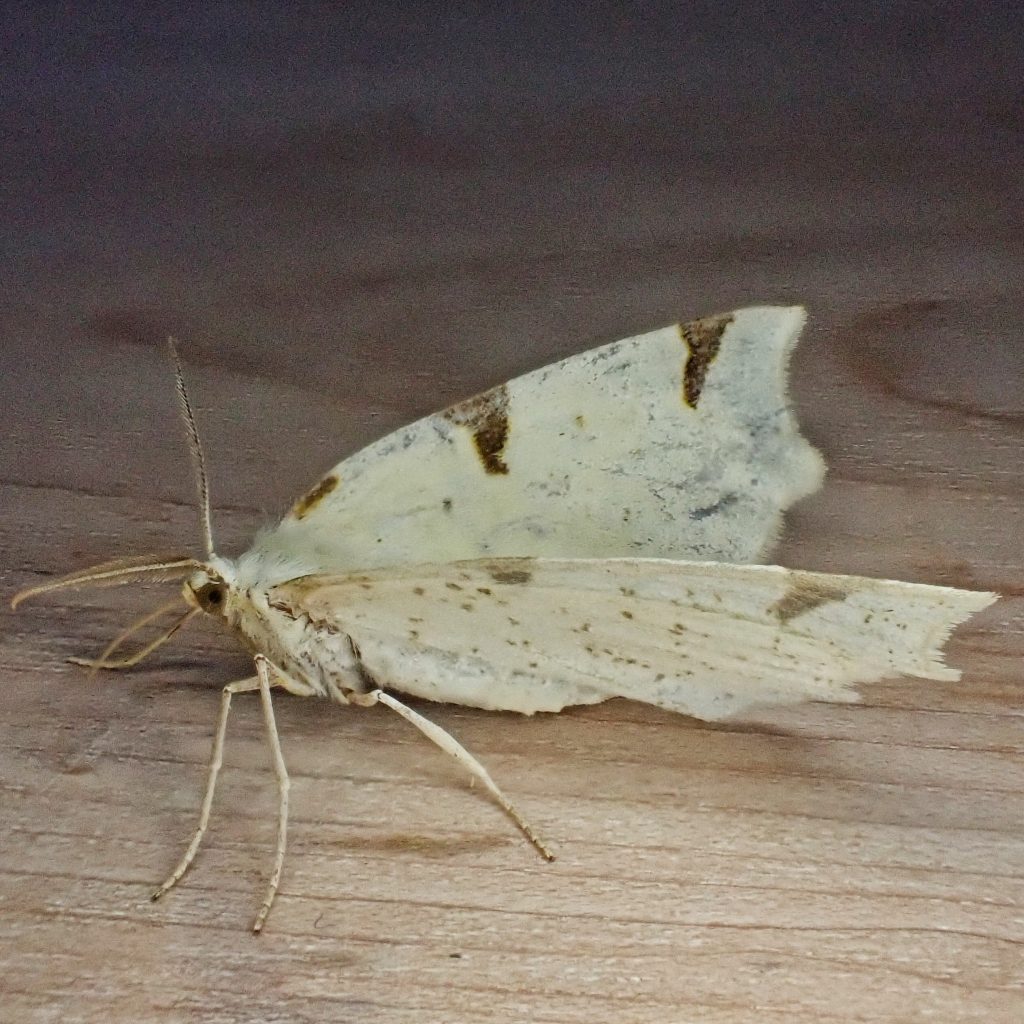
Habitat-Mixed forests and woodlands from low elevation to subalpine.
Range-Western North America; region wide in suitable habitat; absent from shrub steppe and the most arid parts of the interior.
Eats-Larval hosts are members of the genus Ribes (currants and gooseberries)
Eaten by-Insectivores of all classes; larvae probably parasitized by various species of Ichneumon and chalcidoid wasps.
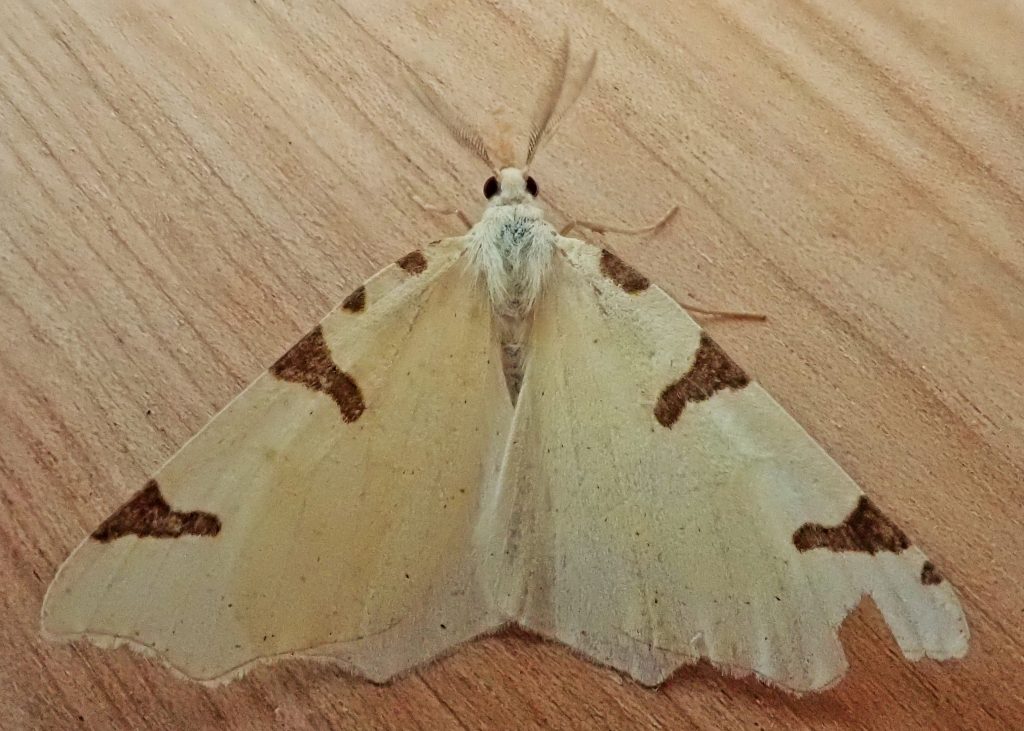
Reproduction-Univoltine; caterpillars are twig mimics; overwinter as pupa wrapped in a leaf.
Adults active-April through July
Etymology of names–Neoterpes may be from the Greek words for ‘new delight’, but Hulst gives no explication in his description of this genus. The specific epithet trianguliferata is from the Greek for ‘having triangles’, and probably refers to the markings on the forewings.
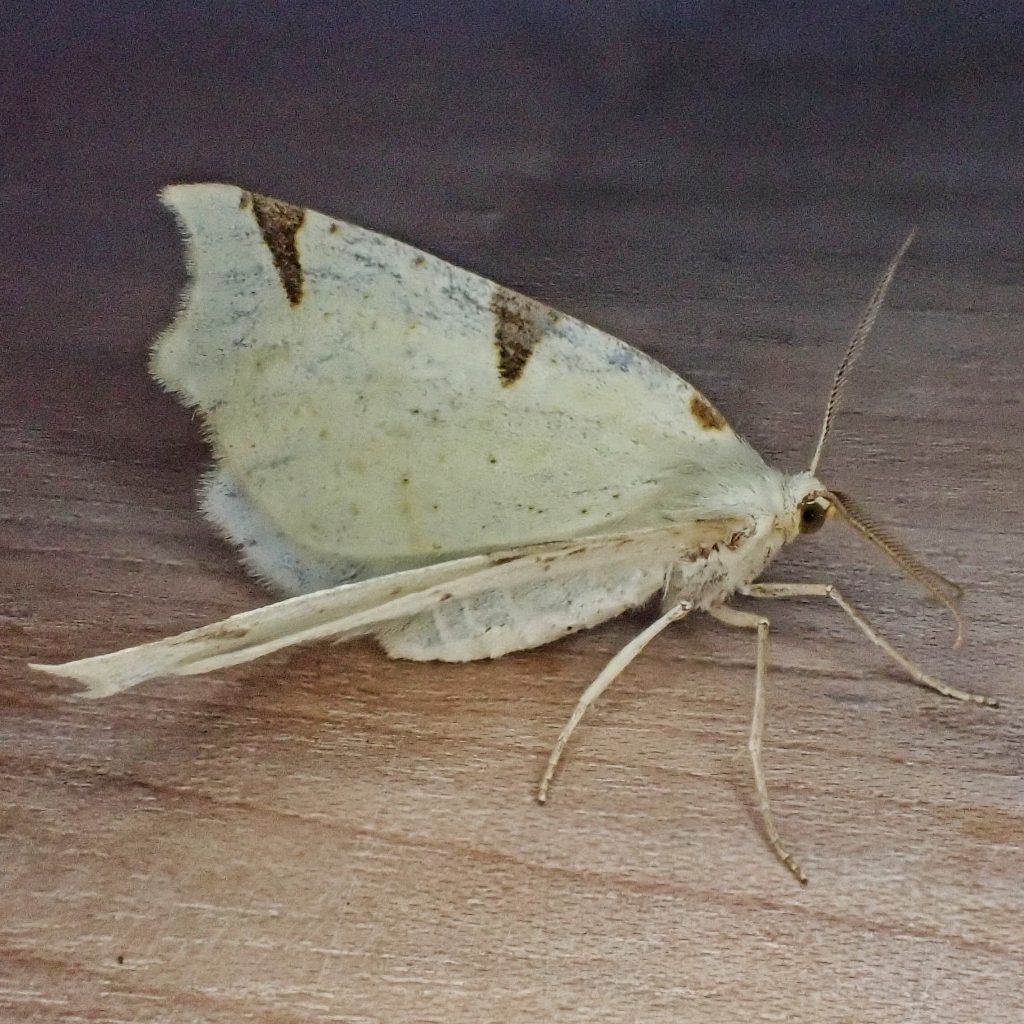
https://bugguide.net/node/view/114007
https://www.butterfliesandmoths.org/species/Neoterpes-trianguliferata
http://mothphotographersgroup.msstate.edu/species.php?hodges=6860
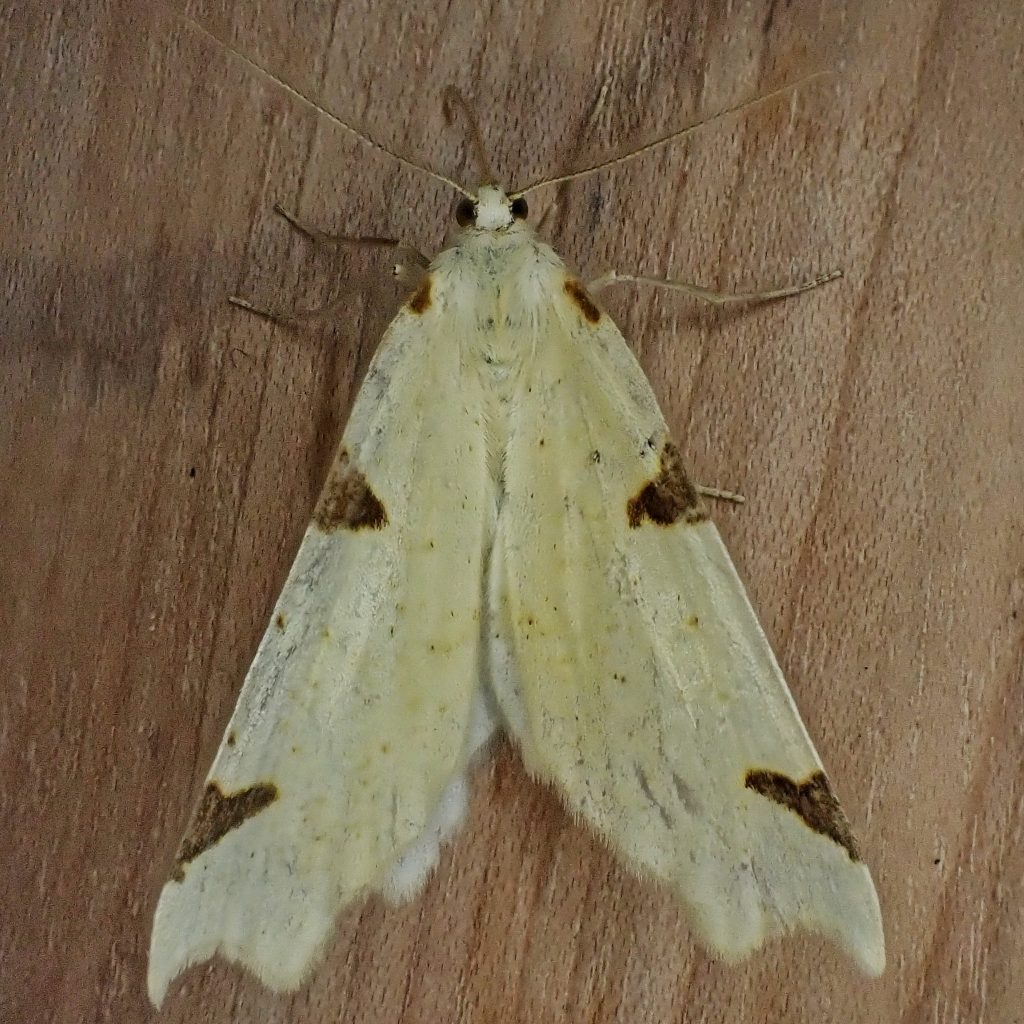
I found them here in Metchosin, near Victoria, BC, every year at an elevation of ca 18m above sea level in mixed second growth forest.
Cool! Are there lots of Ribes sp. about? What time of year do you find them? Thanks
I am enjoying your posts! My neighbor and I are documenting the fungi along our rural road and are amazed at what we find each fall. The documentation can be frustrating at times — so it’s good to see someone else’s work.
Sounds like a cool project!
I went to your website expecting something on your fungal documentation, and instead I find you’re a writer. And a good one, it appears, since after reading the sample for ‘EvoAngel’ I was compelled to purchase the book. This is gonna be fun!